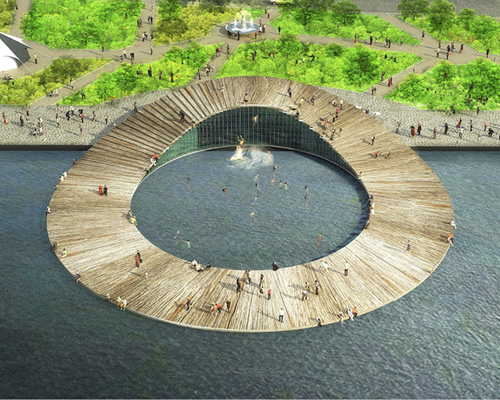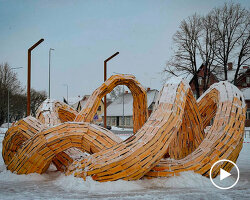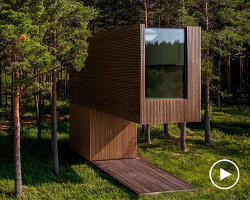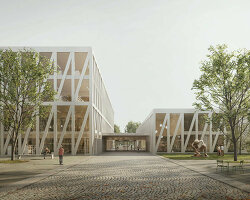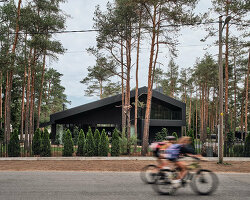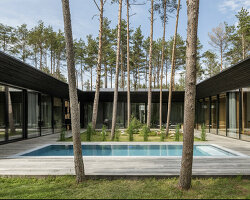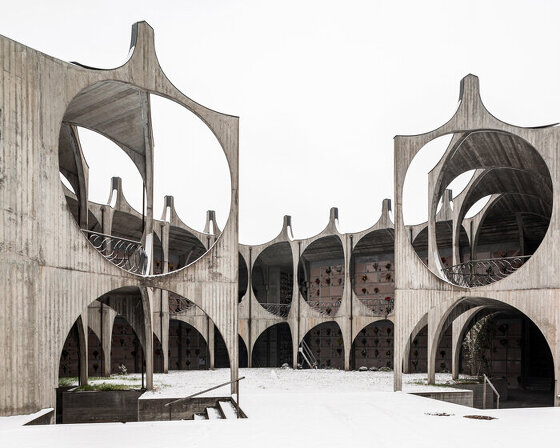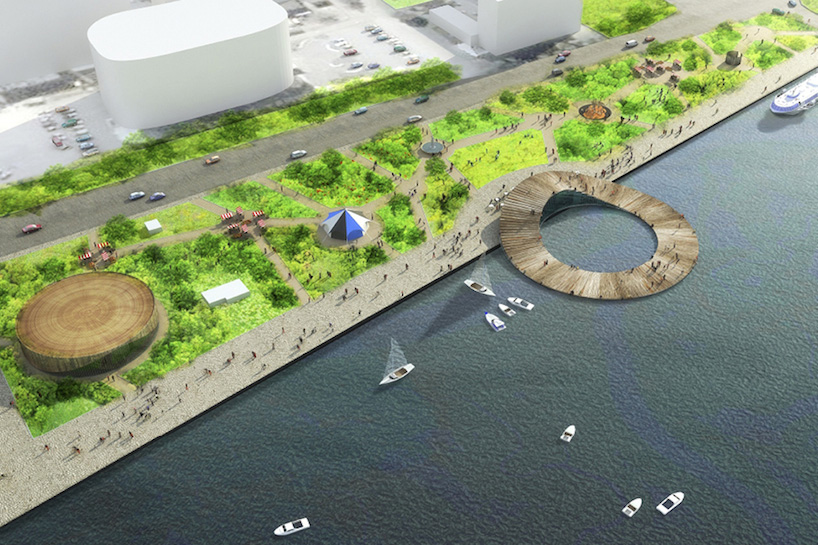
the baltic sea contains 377,000 square kilometers of water and thousands of years of history and cultural exchange. branching off of this information, the ‘baltic sea art park’ in pârnu, estonia by kilometrezero is a narrowing of these common ties among the countries bathed by its coast.
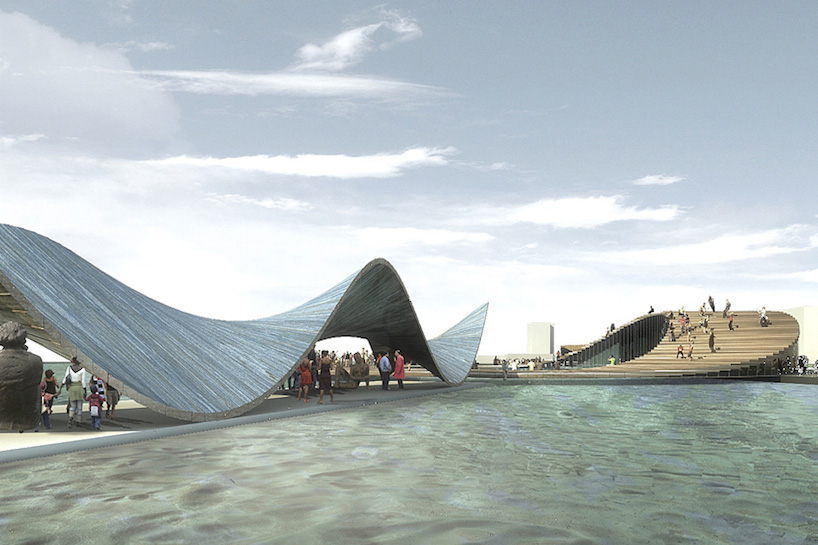
all images courtesy of kilometrezero
the project is structured in three parts: park planning, land buildings, and floating pavilions. the zones have been clearly divided, but still have a strong relationship to one another.
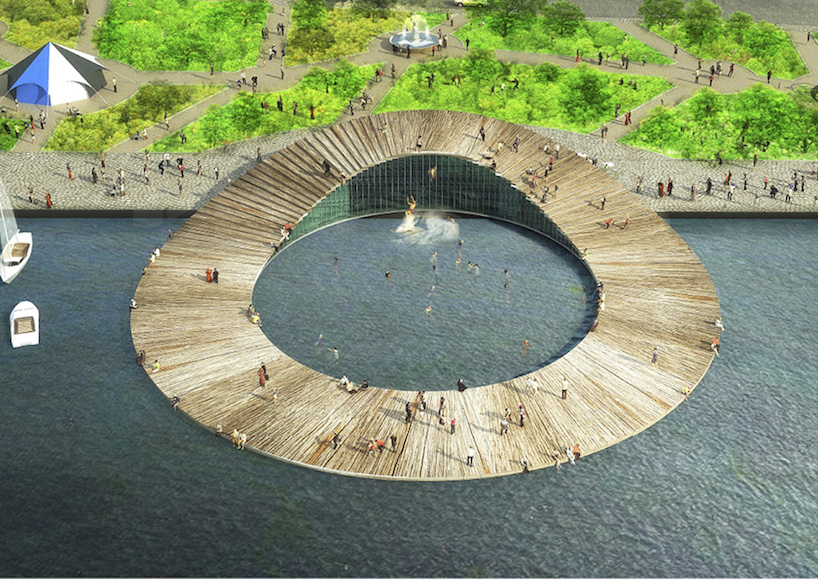
baltic circle
the organization is directed by a simple but effective operation: keeping the existing trees and promoting the planting of new ones. on the boundary between terrain and water appears the ‘baltic circle’, an iconic structure for the city that act as a point of transition as it mixes terrestrial and marine programs.
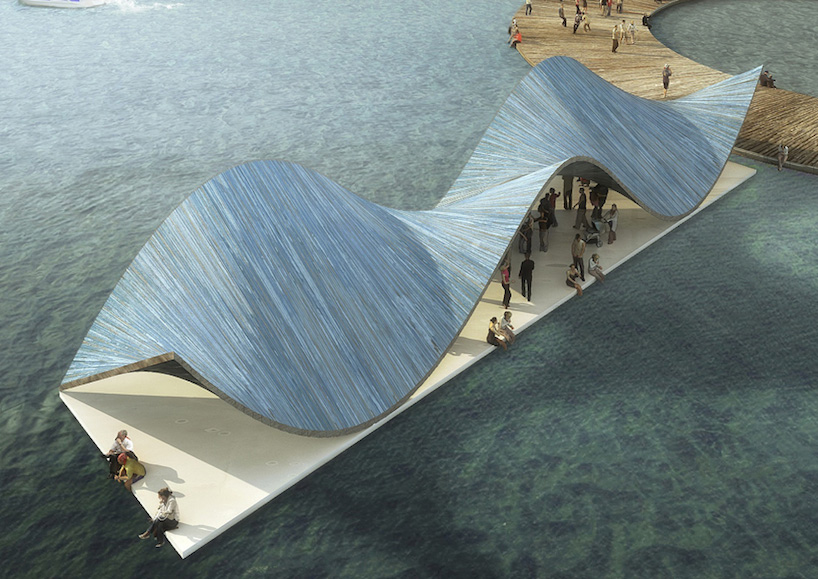
estonian floating pavilion
in plan, the architecture embedded into the sea appears as a simple ring and a rectilinear platform, while their vertical distortion has been formed based on the sinuous curvature of waves that splash onto shore. for the circular construct, this gesture lifts up one edge along the circumference, making way for a wall of glazing that permeates light into the building. on top, the walkable surface provides a vantage point to view the city and a diving board for the pool below. the block takes the same metaphor to a greater extent, with more undulation that modifies access to the port and directs views outwards.

pavilion interior
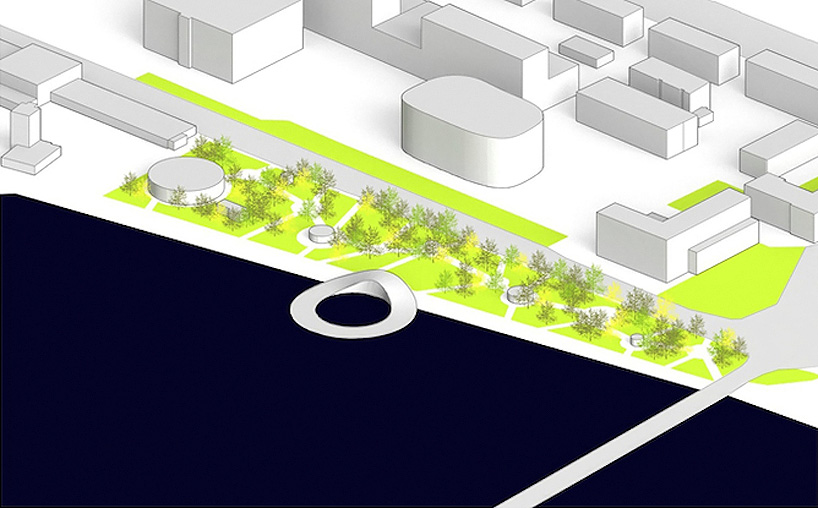
as a result of the changes, the park reactivates, reconnects and provides a cultural icon that completes the city fabric
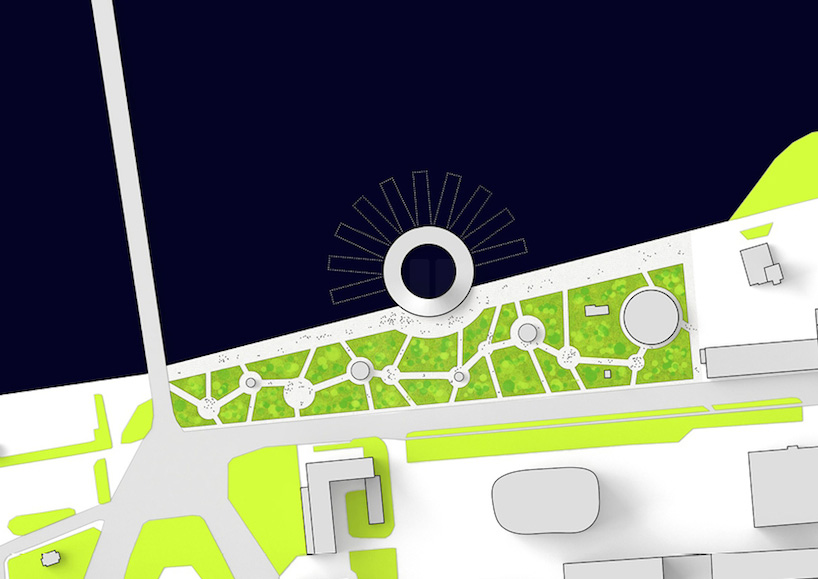
master plan
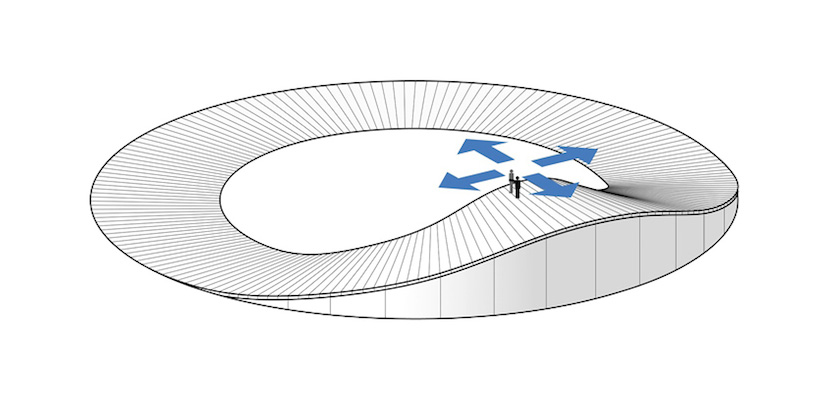
the accessible roof of the building offers better views of the environment and a springboard when it operates as a swimming pool in the summer
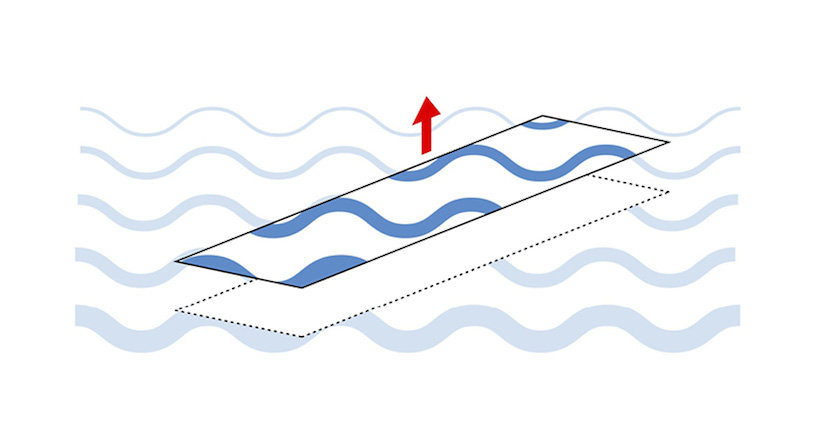
the ‘wave’ pavilion is a space that inverts the relationship between land and sea, or between the surface of a boat and the sea over which it floats
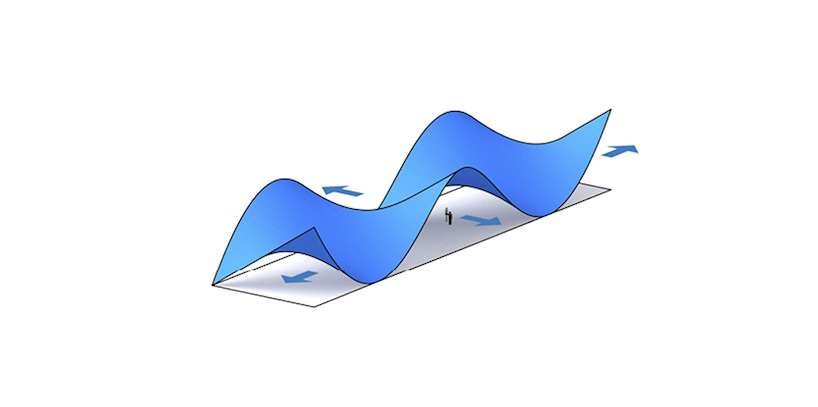
the structure allows not only modified access according to the port, but also to enjoy views of the surroundings
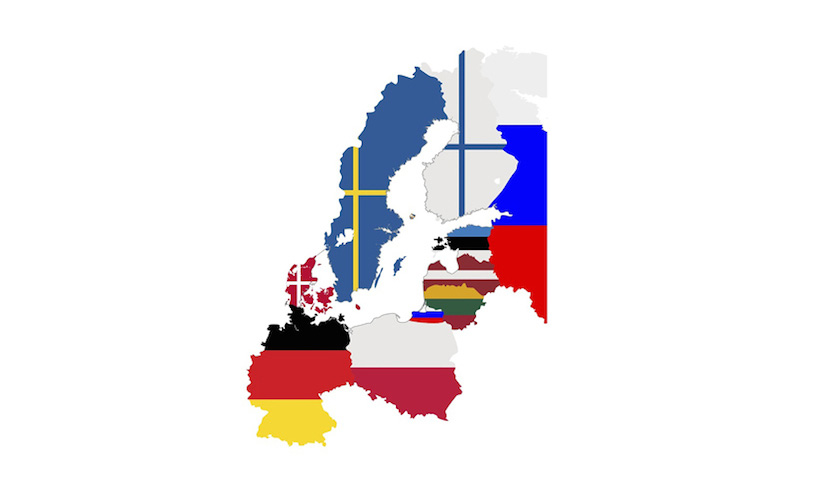
nine countries and an autonomous territory which form 9,200 km of coastline and 377,000 km² of water

the connections between the different cities and lands around the baltic sea have formed throughout the time, a common history and culture
designboom has received this project from our ‘DIY submissions‘ feature, where we welcome our readers to submit their own work for publication. see more project submissions from our readers here.
Save
Save
